TechRadar Verdict
A well-made mid-range phone, but one a little too expensive given the competition at the price. You can get a similarly impressive phone with a better camera and CPU for the same cash.
Pros
- +
High-quality aluminium build
- +
Decent battery life
Cons
- -
Quite expensive
- -
Poor low-light camera performance
- -
Emotion UI needs manual tweaks
Why you can trust TechRadar
The Huawei Nova is a mid-range phone, designed to give you the look and feel of an expensive mobile, while cutting down some of the bits and bobs inside to keep the price well under that of top-end models.
It costs 399 Euros (around £345/$445/AU$585), but it remains to be seen how widely the Nova will be sold, with a UK release on the cards but no guarantee of a US or Australian launch. There's a reason why not every retailer under the sun is grabbing for this phone, as the price is quite high for a mid-range handset, particularly one with the Huawei name engraved across its back.
If you have a soft spot for the brand, though, this is a perfectly solid phone, it just lacks the aggressive pricing edge that has made us recommend entry-level and mid-range Huawei phones in the past. This is compounded by the falling prices of some 2016 flagships like the LG G5, which really aren't a wheelbarrow of cash more expensive.
It's also shown up by the OnePlus 3, which costs a similar amount but has some higher-end components.
Key features
- Higher-end than the Huawei mid-range norm
- … but pricier too
- There's a big brother if you want a larger screen
The Huawei Nova is a grade-A box-ticker. It has all the features you might ask for when trying to see whether a phone's worth its asking price, on paper at least.
It has a fingerprint scanner, a high-quality screen, an aluminium body and a solid set of cameras, that can outdo those you get in top budget phones like the Motorola Moto G4.
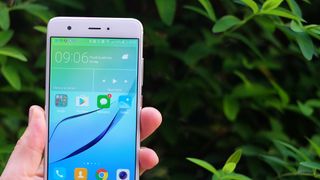
The main cut-down part of the Huawei Nova is the CPU. Its Snapdragon 625 brain isn't the fastest, being closer in abilities to some of the best-value £150-200 phones, again like the Moto G4, than top devices like the Huawei P9 and Samsung Galaxy S7. This doesn't ruin performance, but does increase loading times a little, particularly in games.
The screen is a fairly small 5-incher too, but this is deliberate, as this phone has a brother, the Huawei Nova+. That costs just 30 Euros (around £25/$35/AU$45) more, and has a larger 5.5-inch screen, as well as a higher spec camera.
What we get with the Nova family is a true mid-range series, where Huawei used to try to fit the mid-range experience into budget-price phones with mobiles like the Huawei Ascend G7. The issue is that we're seeing Huawei push up to the kind of prices we're more used to from companies like Samsung and Sony.
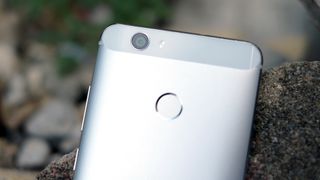
Huawei is no newcomer, and maybe it's time for phones like this to play head-to-head with the names even gadget-haters know. But we're a little sad to see Huawei lose its bargain hunter badge, particularly when it hasn't altered the software much.
The custom Huawei UI is what puts a lot of people off its phones. Be sure to read the software section of this review to find out if you might be among them.
Design and display
- High-quality metal build feels good
- The design is a bit too familiar for our liking
- Solid, if not class-leading 1080p screen
The Huawei Nova is an aluminium phone and it feels dense and hard, two properties that make a device feel like it is made of solid metal rather than a cheap phone with a metallic finish.
It's not all metal though, as there are plastic inserts at the top and bottom of its back. These bits of plastic are what tell you this is a slightly lower-cost phone than the iPhone 7 or Huawei P9, but you won't notice them when simply holding and using the phone.
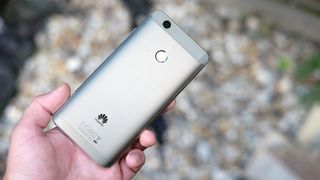
It's a little hard to get excited about the Huawei Nova's design, though, because it looks like a half-dozen other phones Huawei has made over the years, including some cheaper models. You might expect a clever design spark to accompany the "Nova" name, but there isn't one. The build is solid, but the style is pedestrian.
If you're happy buying Huawei, you're probably not an obsessed phone fashionista, though, and the Huawei Nova has an exceptionally easy-going design for day-to-day use. A 7.1mm thickness and a 5.0-inch screen mean it's not a pocket-bulging phone.
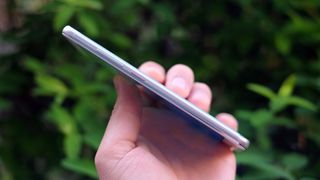
It's very similar in size to the Samsung Galaxy S7, shaving off a half millimetre of width thanks to its ever-so-slightly smaller screen.
Like many Huawei phones, the Nova has a fingerprint scanner on the back. While it seems, anecdotally, a fraction slower than that of the Huawei P9, it's still very speedy and reliable, and unlocks the phone just by resting your finger in the indented sensor on the back. No button press is required.
The scanner sits right under where your forefinger naturally rests, and is a perfectly good alternative to the front scanners used in iPhones and Samsung Galaxy phones, though less accessible when the phone is sat on a desk. Huawei has nailed fingerprint scanners for a while now, and it doesn't disappoint here.
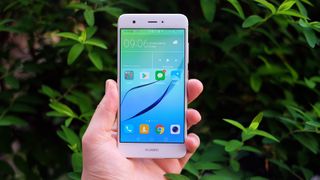
Around the front, the Nova's screen is five inches across, with a resolution of 1080 x 1920. Look extremely close and you can just about tell it's not as sharp as the Samsung Galaxy S7, but you do have to try: it's super-sharp.
We came to the Huawei Nova after using the Sony Xperia XZ, and the screen on the Nova has much more relaxed, natural colours. It's not overblown, but is full and rich-looking.
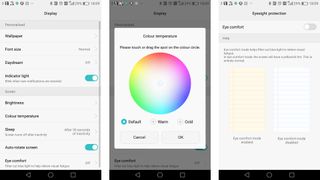
This is an LCD screen, so doesn't have quite the contrast and blacks of an OLED, but it does use a good panel. Maximum brightness is strong, making outdoor use no problem, the one obvious weakness is that the brightness drops off when you look at the screen from an angle, but it's not a major issue for general use.
Typical of a Huawei, you can tweak the colour temperature to suit your eyeballs' tastes, making it look warmer or cooler. There's also an Eye Protection mode that makes the screen very orangey, cutting out some of the blue light that causes eyestrain. You see this all over the place now Apple has made it trendy with the iPhone's Night mode.

